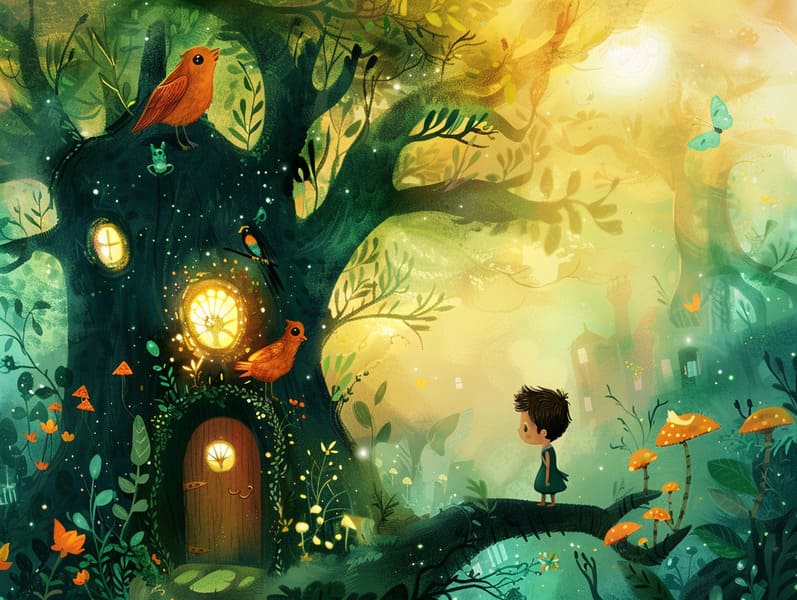The Origins of Mythical Fairy Tales with Its Ageless Delight.
The Origins of Mythical Fairy Tales with Its Ageless Delight.
Blog Article

Traditional fairy tales have deep roots. These narratives have been relayed from one generation to the next far before they were ever written down. They sprang from a variety of societies, including European traditions. They were initially passed along among adults, often carrying themes and messages reflective of the societal norms and beliefs of the time.
The famous Grimm duo, Jacob and Wilhelm (the Grimm brothers), were among the first to gather many of these beloved narratives. Their published works, "Grimm's Fairy Tales," included narratives like "Ashenputtel," "Hansel and Gretel," and "Little Snow White," which have since become staples in the world of traditional fairy tales. Similarly, Andersen's enchanting fairy tales, such as "The Story of the Little Mermaid," and "The Ugly Duckling," have stolen hearts worldwide, solidifying their place in the pantheon of iconic fairy tales.
Despite their ancient origins, these tales remain as pertinent as ever, especially as children's night stories. These charming stories are now available in many formats, including gorgeously illustrated books, charming animations, and web-based fairy tales.
Their unwavering allure can be ascribed to several enchanting factors:
Valuable Lessons: Timeless fairy tales often offer important moral lessons. Tales like "The Boy Who Cried Wolf" teach the benefit of truthfulness, while "The Tortoise and the Hare" highlight the values of steadfastness and unassuming nature. These stories offer young readers clear distinctions between truth and falsehood, molding their moral compass in a gentle yet significant way.
Sympathy and Perception: Old fairy tales frequently illustrate individuals facing obstacles and hardships, stimulating listeners to empathize with their struggles and back their triumphs. For instance, "Beauty's Beast" emphasizes the benefit of looking beyond appearances to comprehend the real character of a person, enhancing understanding and perception.
Cultural Comprehension: Many old fairy tales are steeped in the cultural contexts from which they grew. Engaging with these fairy tales can provide informative snapshots into different heritages, cultivating a sense of world insight and appreciation.
Inventiveness and Imagination: The enchanted elements in timeless fairy tales—spells and potions—kindle children’s dreams. These narratives move readers to imaginary realms, promoting imaginative thinking and a sense of awe that remains a lifetime.
Old fairy tales are not only spellbinding but also instructive. They work as fantastical tools in fostering various mental and emotional abilities in little ones. When classic fairy tales are told out loud, they foster linguistic abilities by teaching new language items and elaborate sentence structures. This practice also boosts hearing abilities and focus, as children stay focused, looking forward to see what happens next.
Furthermore, discussing the themes and characters of old fairy tales can develop intellectual skills and thought processes. Little ones are educated to notice patterns, expect results, and grasp cause and effect. These contemplations also advance the young speak out their thoughts and feelings, cultivating their emotional intelligence.
In today’s technological era, the existence of web-based fairy tales has made these narratives more available than ever. Online resources and digital apps share vast collections of Grimm's fairy tales that can be browsed or listened to anytime, anywhere. Fairy tales recited are particularly prevalent, supplying an captivating way for young readers to immerse in these entrancing tales. Voice books and read-to-me videos lead characters and settings to life, often paired with entrancing sound effects and melodies that boost the narrative journey.
The lasting allure of old fairy tales lies in their ability to adapt to the present while sustaining their core messages. Contemporary revisions of these tales often introduce more representative figures and modern settings, making them relatable to today’s audience. However, the central morals of braveness, generosity, and honesty remain unchanged, continuing to touch children of all ages.
Old fairy tales also offer a sense of calm and closeness. They impart upon a methodical narrative with a apparent beginning, middle, and find it here end, often concluding with the resolution of conflicts and the triumph of virtue over corruption. This uniformity can be easing for young ones, yielding a sense of unchangeability in an shifting world.
Old fairy tales continue to spellbind and edify new generations, maintaining their mystique and relevance in modern society. As nighttime stories for kids, they feature a perfect blend of delight and instruction, cultivating moral values, empathy, and creativity. The accessibility of internet fairy tales and the commonness of fairy tales voiced validate that these timeless fairy tales remain reachable to new generations.
By preserving and conveying these narratives, we continue to revere the rich tapestry of fables and cultural heritage. Whether you are accessing a beautifully illustrated book, perusing a web-based collection, or hearing an voice book, the magic of children's fairy tales is always within reach. These tales illustrate of the endless magic of narratives and its ability to connect us across time and space.
No matter if you are exploring a beautifully illustrated book, discovering a virtual library, or listening on an sound book, the beauty of children's fairy tales is always within reach.
These tales convey of the persistent presence of tales and its ability to unite us across time and space, establishing a link that captivates and teaches alike.